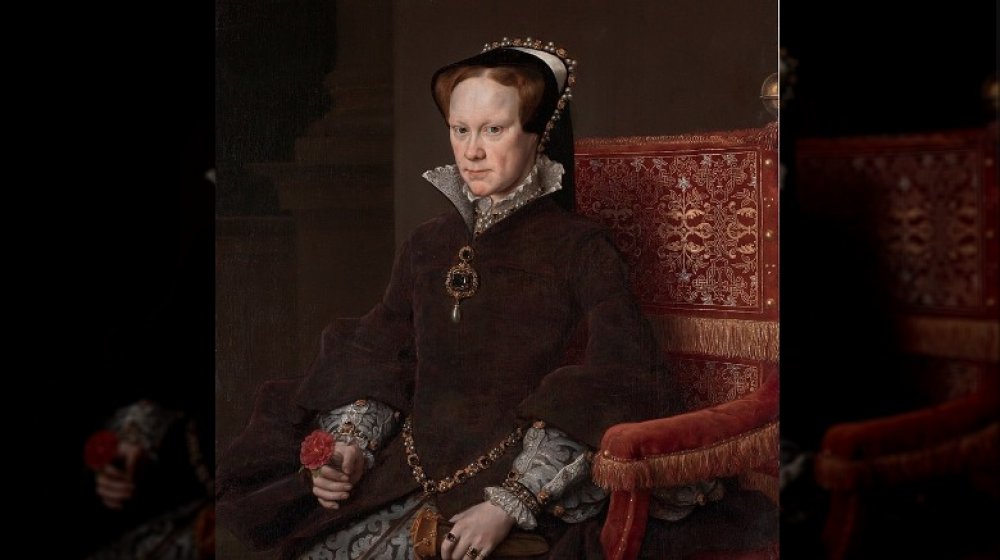The Real Reason Queen Elizabeth I Was Nearly Executed
It's not enough that you hold a throne. There's also keeping the throne — in your own lifetime, and in the days after, because even royalty dies someday. Henry Tudor, crowned Henry VIII of England, demonstrated this perhaps better than anyone. His desire for a male heir led to all manner of havoc in England during his reign (April 22, 1509-January 28, 1547), including upending religion and the lives of his six wives and their children.
It's roundly thought that Henry's drive for a male heir led him to divorce his first wife, Catherine of Aragon, because their only child who lived was female, Mary. The second wife, Anne Boleyn, also gave birth to a girl who lived, Elizabeth. It wasn't until the third wife, Jane Seymour, that Henry had the male heir for which he was willing to sacrifice nearly anything. Edward VI took the throne upon Henry's passing, but even at the young age of 9, only reigned for six-and-a-half years. He died childless. He designated a cousin, Lady Jane Gray, as his successor, as Biography tells us — his older half-sister Mary was Catholic, and that would no longer do; plus, he considered both Mary and Elizabeth illegitimate, and therefore ineligible.
Elizabeth must have been convincing
Alas, the powers surrounding the throne disagreed. Jane was deposed after just 10 days and Mary's supporters installed her as queen. That did leave the troublesome loose end of Elizabeth. It's not as though royal relatives never plotted against one another. What if Elizabeth, the Protestant, fomented rebellion against Catholic Mary, says History, who herself was trying to roll back the Protestant reforms of her father and half-brother?
Rebellion was indeed in the air, at least partly based on religious differences. Queen Mary I was called Bloody Mary (yes, the real one) for good reason. She did not hesitate to quash religious dissent, violently if necessary. As History Hit tells us, Mary came very close to executing her half-sister, Elizabeth, after Wyatt's Rebellion, until Elizabeth managed to convince her that she'd had nothing to do with the uprising. As it was, Elizabeth was imprisoned for two months, and then under house arrest for a year, because of Mary's suspicions. Elizabeth survived the intrigue to ascend to the throne upon Mary's death in 1558.
Their cousin, Mary, Queen of Scots, didn't fare so well. A rival to the throne of Elizabeth, she was under house arrest herself for nearly 20 years before Elizabeth had her executed.

